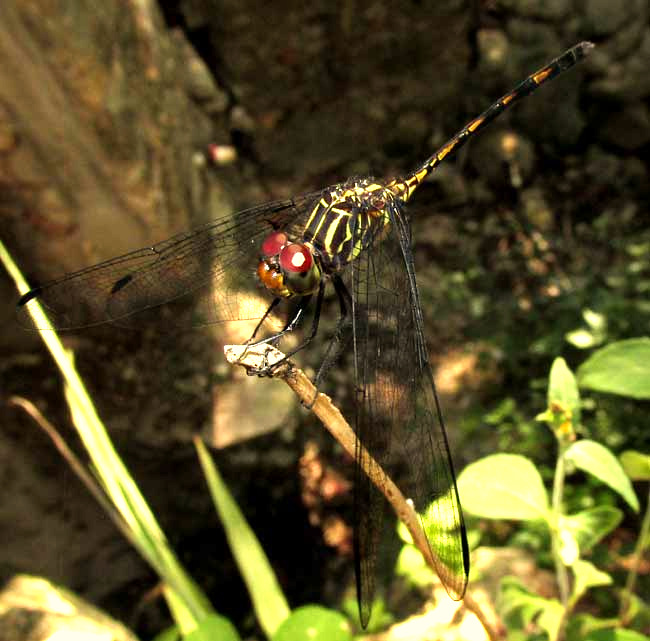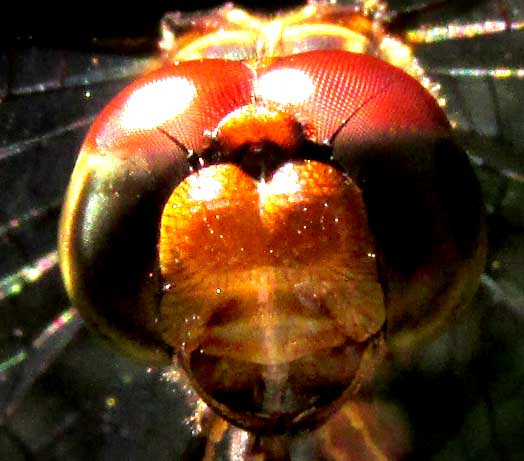Excerpts from Jim Conrad's
Naturalist Newsletter
from the July 27, 2018 Newsletter issued from Rancho Regenesis in the woods ±4kms west of Ek Balam Ruins; elevation ~40m (~130 ft), N~20.876°, W~88.170°; central Yucatán, MÉXICO
BROWN SETWING DRAGONFLY
Late one afternoon as the Sun dipped low and it began to cool off a little, a dragonfly appeared atop a dead grass stem at the very rim of the deep pit next to the hut, right in front of my reading spot. You can see him below:

I thought sure he'd fly away as I approached for other views, but he didn't. Next I got a fine side shot nicely showing the black and yellow stripes on its thorax, shown below:

The dragonfly seemed to like the spot. I got so close that he flew off, but then instantly returned to another stem just inches away, displaying unusual fearlessness or attachment to one spot. Up close I got a wing shot, because in dragonfly identification the patterns formed by wing venation are fixed and vary from species to species. Below you can the wings' intricate network of veins:

The little being got so used to the camera being less than an inch from his face that he permitted the amazing portrait shown below:

At first I thought my visitor was the commonly seen Thornbush Dasher, which we looked at just last week, and whose page is at www.backyardnature.net/mexnat/dasher.htm
However, that dragonfly is larger and more robust, with bluish/greenish eyes and a white spot near the end of its abdomen, while our pit-rim-sitter has brownish/reddish eyes and there's no white spot.
It's the Brown Setwing, DYTHEMIS STERILIS, occurring throughout most of Mexico and the Caribbean south through Central America into northern South America. The genus Dythemis occurs only in the American tropics, with seven species recognized.
Brown Setwings occur on many dragonfly lists and plenty of pictures have been taken of them, but there's little information on their life history. I'm glad I can report our Brown Setwing's stubborn refusal to move away from the pit's rim, but also the fact that each afternoon for several days in a row he returned to the same dead grass stem, and took many, many short flights to catch prey I couldn't even see. He continues to do so.
I've wondered whether his attraction to the pit's rim might be an adaptation for our karst topography punctuated with many sinkholes?